Matador Network's Blog, page 1229
October 31, 2018
Japan’s new “Sayonara Tax”
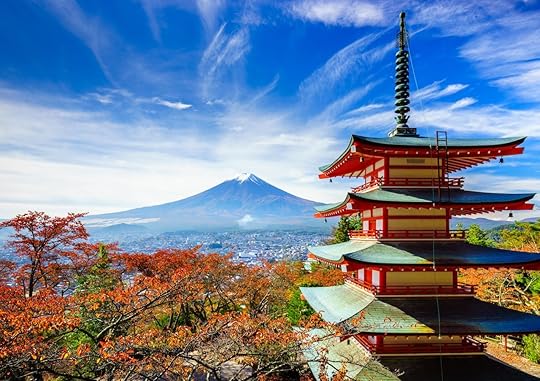
Travelers to Japan will soon have to pay a tax — not on entering the country, but on leaving it. Maybe it’s because Japan loves visitors so much it wants them to stay forever. Or maybe (definitely) it’s because it needs the money for infrastructure improvements and technological advances. The new bill, passed Wednesday by Japanese parliament, will take effect on January 7th, 2019, and will add a fee of $9.37 to departure tickets via plane or ship. It applies not only to international travelers, but to Japanese citizens as well, excluding only those who are in the country for less than 24 hours, and children under two years old.
The “Sayonara Tax” is expected to raise around $402 million, which will be reinvested to make travelers’ lives easier. The money will be used to help increase tourism and promote travel within rural Japan, including upgrades such as facial recognition in airports and free Wi-Fi on public transportation.
The new measure is partly in response to Japan’s recent surge in tourism. In 2017, a record 28.69 million tourists visited the country, and Prime Minister Shinzo Abe hopes that number will increase to 40 million by 2020, during the Tokyo Summer Olympics.
Japan isn’t the only country to have a departure tax. The United States, Australia, South Korea, and the UK have similar fees. 
H/T: Condé Nast Traveler

More like this: How to get a job and move to Japan
The post Japan will impose a “Sayonara Tax” on travelers appeared first on Matador Network.

Why you shouldn’t overlook New Hampshire when you visit New England

Everyone goes to Maine for flannel shirts and butter-soaked lobster rolls; Vermont for picturesque old barns and Ben & Jerry’s; and Boston for Italian food and history. With all the draws of our neighbors, you might be inclined to leave New Hampshire off your itinerary. That would be, in local parlance, a wicked big mistake. You need to include New Hampshire on your next trip to the Northeast — it’s the most underrated destination in New England.
1. New Hampshire is largely still the way it always was.
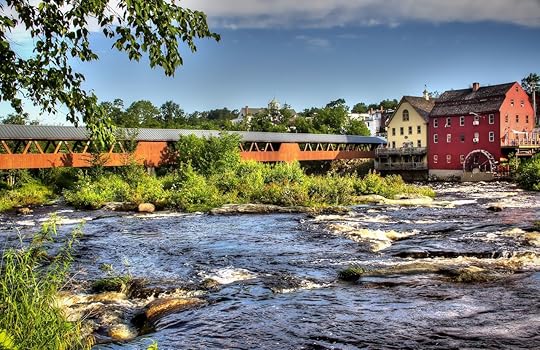
Photo: Diana Nault/Shutterstock
There’s no need to head into a trendy hipster gift store or chain outlet when you can shop at the local general store. The floor creaks, there’s a big jar of pickled eggs on the counter, and you’re more likely to find maple sugar candy than Slurpees. The old man in overalls (he calls them dungarees) behind the counter might seem a little gruff, but there’s a twinkle in his eye when he spots your out-of-state plates and tells you to be sure to stop at all the moose crossings.
2. The state is flush with epic bridges.

Photo: Esposito Photography/Shutterstock
If you thought Madison County was something special, wait until you get a look at New Hampshire’s covered bridges. Once upon a time there were over 400 throughout the state. There are fewer than 75 left, and each one is more postcard-worthy than the last. Many date back to the 1800s and some are restricted to foot or train traffic. The locals used to call these scenic spots “kissing bridges” and you can still spot faded old initials carved by secretive sweethearts. Keep an eye out for signs warning you to walk your horse or face a two dollar fine, and prepare to be charmed.
3. You can get a taste of the ice ages.

Photo: Polar Caves/Facebook
Tap into your inner explorer at the Polar Caves in Rumney. Formed during the last Ice Age, you’ll feel the arctic chill as you descend the narrow metal ladder between the mossy boulders that mark the entrance to the cave. By the time you reach the bottom, you’ll be glad you brought a sweater. Inside the cave, you’ll find a few wooden railings to help you keep your balance but for the most part, you’re on your own to meander through the rocky chasms. Rumney is also a prime rock climbing destination. Note that the Polar Caves are closed for the 2018 season, but will reopen with the good weather in the spring.
4. The state is lined with local and US history.

Photo: Doug Lemke/Shutterstock
Start with Strawbery Banke in Portsmouth, New Hampshire’s answer to Colonial Williamsburg. This 400-year-old village is so well preserved that you can still see the actual china, furnishings, and other household goods from the original settlers. This living time capsule, named for the wild strawberries that still grow along the waterfront, will bring you back through centuries of community life, all the way to the Abenaki tribes who originally occupied the land. The history is palpable as you’re encouraged to duck through the doorways of houses built in the 1600s and peek through mullioned windows across rutted dirt lanes and kitchen gardens to the neighboring houses.
Next, head over to Portsmouth Harbor. You might get the impression that this spot is little more than lighthouse and salt-water taffy, until you realize the whole area is really a collection of historic military forts that are now one of the area’s top tourist draws. The craggy coast full of salt air and seagull caws is also home to the lion’s share of the state’s history, including a rebel rousing by Paul Revere that predates his famous midnight ride in neighboring Massachusetts. The best way to experience the harbor is on foot, where you can poke around in little shops festooned with buoys and fishnets, as well as discover historical markers tucked away in nooks and crannies. Try not to share your fresh scallop lunch with the seagulls.
5. Many of the state’s towns are cute AF.

Photo: Nick Beer/Shutterstock
The Granite State is full of storybook downtowns and “Norman-Rockwell-painted-this” shops and streets, but North Conway is the best of them all. Shop after shop showcases the work of craftspeople from around the state with blown glass baubles, pottery, specialty foods, and countless varied objects d’art. Zeb’s General Store in Mt. Washington Valley is full of Moxie memorabilia, goat milk soap from local farms, birch beer, bath bombs, and moose-shaped cookie cutters. The rest of the town is full of Victorian architecture and a train station that could have been transplanted from a toy Christmas village.
6. New Hampshire is everything you imagined of scenic New England.

Photo: Bob Pool/Shutterstock
Millions of leaf peepers can’t be wrong, but you’ll find yourself slack-jawed and giddy as you creep along the Kancamagus Highway no matter the season. New Hampshire packs a lot of mountain into such a compact state. They’re lichen green and deep emerald through spring and summer, and by mid-September the whole state appears engulfed in flames as waves of sunflower, saffron, and pomegranate wash over the hills. Fall is when the area really shines.
White Mountain National Forest has magic all its own if you’re looking to dive deeper than leaf peeping. To experience as much of it as possible, you’ll want to have your own wheels. Driving the 100-mile loop through the mountain passes, you’ll spot racing rivers and waterfalls, lakes that invite you to stop for a picnic on their banks, and if you’re lucky, some of the state’s notoriously bashful wildlife. Be prepared to pull over at every scenic viewpoint along the road for a better look at mountain panoramas that seem to go on forever.
Just be prepared for wind. The Mount Washington Observatory has the highest recorded wind speed ever observed, a brisk 231 miles per hour. The observatory is full of interesting weather information, but the best part is getting there. You could hike or drive to the top, but many prefer to take the train. The Mount Washington Cog Railway has been chugging up into the clouds with passengers since the 1800s and the experience is sure to take your breath away — and not just because you’ll be at an elevation of over 6,000 feet once you reach the top. When the clouds part, the view across the White Mountains is nothing short of otherworldly. 

More like this: The 25 coolest towns in America: 2018
The post Why you shouldn’t overlook New Hampshire when you visit New England appeared first on Matador Network.

Dark Matter Day is today

October 31st is Halloween, but let’s face it: Halloween gets old after a while. Hanging cobwebs and pumpkin lights, finding the perfect costume, and stuffing our faces with gross quantities of candy corn year after year is a little drab. So, if you’re over Halloween but don’t want to miss out on the holiday spirit, you’re in luck. There’s another holiday on October 31st that may be right up your alley. Dark Matter Day was first recognized in 2017, and it celebrates the scientific community’s important search for dark matter. For those of you who are more scientifically-inclined, and more interested in peering into the mysteries of space than around corners in haunted houses, Dark Matter Day might be your new favorite holiday.
So, what is dark matter?
We know relatively little about the composition of our universe. Stars, planets, galaxies, and gases — the stuff we actually know about — make up less than five percent of the total mass and energy in the universe. Dark matter makes up 85 percent of the universe’s total mass, and it’s still largely a mystery. We do know that it allows galaxies to spin at an unusually fast rate without unraveling, but we’re not entirely sure what it looks like, or what it consists of. Scientists believe that dark matter may be undiscovered particles floating around our cosmos, or simply a glitch in our understanding of gravity and the laws of physics. Discovering dark matter’s secrets — what it does, what it’s made of, and what it looks like — would vastly improve our understanding of the universe. That’s why scientists across the world, using a range of high-powered technology, are engaged in experiments aimed at finding the source of dark matter.
What is Dark Matter Day all about?
Sponsored by the Interactions Collaboration, a community of particle physics communication specialists, Dark Matter Day is a celebration of this cosmic mystery and our ongoing hunt for answers. First officially recognized on October 31st, 2017, the holiday is intended to encourage inquiry into the nature of dark matter, with educational events, activities, and film presentations being held around the world.
How can you celebrate?
A wide variety of dark matter events are being hosted globally, including the US, Spain, and India. For example, England’s University of Surrey is holding an event called “Seeing the Unseen,” a series of brief talks by physics lecturers about their cutting-edge research, complete with interactive stands and demonstrations. In Lucerne, Switzerland, the Swiss Museum of Transport will host a planetarium show called “Phantom of the Universe,” and at Canada’s University of Manitoba, dark matter lectures will be followed by stargazing sessions on the roof.
If you can’t attend an event in person, there are also a number of virtual events taking place via live Facebook broadcast. These include “Live from Modane Underground Laboratory in France,” “Live from Fermilab in the US,” “Live from AMS Control Room at CERN,” and many others.
To find a live event near you, check out the full list here. 

More like this: 6 space travel projects that will become a reality in our lifetime
The post Today is Dark Matter Day, science’s version of Halloween appeared first on Matador Network.

October 30, 2018
Why you should visit Chile's beaches
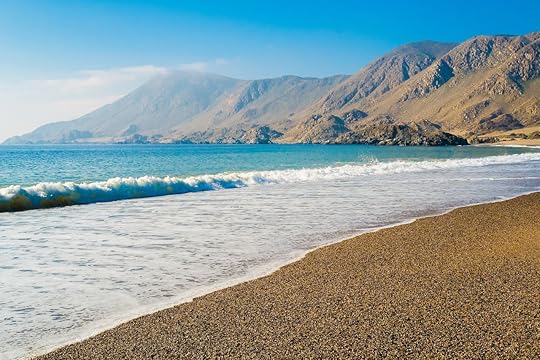
Chile is at the southern end of South America, so while northern hemisphere days are getting shorter and colder, Chilean summer is around the corner. By December, school’s out for the year, and the beaches are in full summer swing.
Chile’s 2,600-mile shoreline is the longest Pacific stretch in South America. With so much coastline, the variety of beaches is endless. Add in incredible seafood, hopping surf towns, and sleepy fishing villages, and Chile’s beaches are the perfect escape from the winter. Here are all the reasons you need to be at a Chilean beach this winter.
Chile has amazing summer weather.

Photo: Guaxinim/Shutterstock
During summer, Chile doesn’t just have warm weather. It also has one clear day after another, since it hardly rains — all but ensuring a dry, sunny vacation. Now the big disclaimer: The main reason Chile gets little rain is that the ocean water is cold. When water is too cold to create water vapor, rain clouds don’t form. The Humboldt current that runs north all the way up Chile’s coast from Antarctica keeps the ocean nice and chilly.
So if you’re expecting to soak in warm seas, pisco sour in hand, think again. If you plan on an activity like surfing, a wetsuit is a must. But, to keep things in perspective, Chile’s summer water temperatures are higher than those in Northern California — especially as you head farther north. Plus, at a few beaches along the coast, natural outcroppings and bays keep the sea calm and warm.
Some beaches have turquoise blue water.
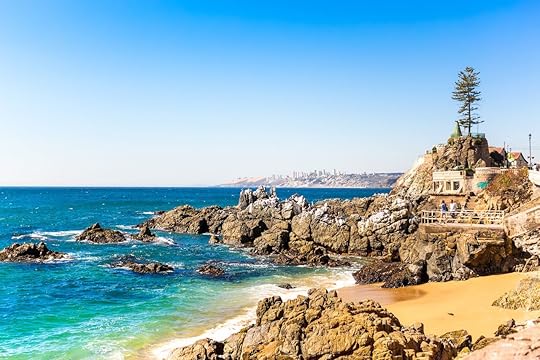
Photo: Gubin Yury/Shutterstock
In Chile’s northern beaches, the water looks so tempting you might be fooled into thinking you’re in the Caribbean — until you jump in. In the far north, though, the water will be more refreshing than bracing, and the color will definitely be beautiful. At Bahía Inglesa in the ultra-dry Atacama region, the ocean’s turquoise hue looks bright against the pale sand. The bay is protected from southern swells, so the water is tranquil and balmier than just a few miles away. The small restaurants lining the beach are a good place for a lunch of local seafood, especially the oysters for which the area is known.
South of Bahía Inglesa, La Virgen Beach is only accessible by car via miles of dirt road. Driving in, you’ll be impressed by the sight ahead — intense blue, light sand, and thatched beach umbrellas — even before you reach the beach. If you stay at one of the cabins or the campground, the dry desert air and absence of light pollution will reveal a nighttime sky absolutely packed with stars.
It has beautiful beaches for long walks.

Photo: michelepautasso/Shutterstock
Chile has beaches tailormade for long walks and gazing at the sunset. A two-hour drive northwest of Santiago, Zapallar is one of the most beautiful beaches in the country. Elegant summer houses tucked into the forested hillside overlook a protected cove. From there, a paved path along the coast leads over massive rocks and above crashing waves. Eventually you’ll arrive at Cachagua Beach, the perfect place to continue your walk. If navigating rocks and crossing over pounding swells is too scary, you could just take a long walk on Cachagua beach itself, a flat and lovely three-mile-long stretch of sand.
There are beaches for adventurers and surfers.

Photo: LMspencer/Shutterstock
Surfers and kitesurfers can find waves — or wind, if that’s what they’re looking for — up and down the Chilean coast. Even Cachagua has plenty of surf breaks, including an excellent one at the north end of the beach. However, Pichilemu in the Navidad area southwest of Santiago is Chile’s surf capital. Nearby Matanzas beach also has waves, plus a laid-back feel and accommodations of every type. In Matanzas, you’ll also spot sea lions, seabirds, and mollusks that may end up in your ceviche or empanada in the evening.
In the same Navidad area, you can access Puertecillo beach in a four-wheel-drive car by way of a private road through the Topocalma farm. Besides surfing and boogie-boarding, Puertecillo has unusual rock formations, caverns like Cueva del Chivato, and wind-sculpted sand dunes. At the south end of Puertecillo, you’ll find a campground and a surf school. A little ways beyond Puertecillo is Buchupureo, a rural coastal town in the Bío Bío region. If you aren’t a surfer, you could always go horseback riding on the seashore at sunset there.
It has beaches with a chill, hippie vibe.

Photo: JeremyRichards/Shutterstock
If you want to pitch a tent and pass the night watching the stars with a guitar, connected to Mother Earth, you’re in the right place. The hippie Hornitos area up north gets its name from the fact that the sand is crazy hot in summer — since hornitos means “little ovens.” At the Los Hornos and Punta Hornos beaches, the desert meets the sea while colored houses dot the dust-colored shore.
Hornitos lies above a bump in the coastline that protects it from southern swells. You’ll get calm waves and water that’s actually warm enough for a nighttime dip. This part of Chile is remote, though. Even the summer homes don’t have electricity or running water. If you decide to go, bring everything you need.
In the opposite direction, well south of Santiago where the water is definitely brisk, you’ll find the fishing village of Curanipe. This area has managed to escape the radar of most tourists, but it’s well known among surfers who use it as a base to explore Buchupureo and other nearby breaks. Despite being nearly 10,000 miles from Indonesia, Curanipe was hit hard by the 2010 tsunami, and a memorial at the pier stands in memory of those who lost their lives.
On a summer day in this unassuming fishing village, you can listen to live music, sip a Pisco sour outside, and check out wheelbarrows full of live crabs. The best beaches here are the Bohemian black-sand beaches of La Sirena and Curanipe, which have places to camp nearby.
Chile even has Polynesian-like beaches.

Photo: Olga Danylenko/Shutterstock
Although it’s one of the most isolated places on earth, Easter Island is part of Chile, and you can get there on a daily non-stop flight from Santiago — although the trip is over five hours and will cost you at least $600 round-trip. Easter Island, also known as Rapa Nui, only has two sandy beaches. Anakena Beach is flanked by palm trees and the Moai statues of the Ahu Nau Nau, with white sand and warm, crystal-clear water. You won’t find many places to buy something to eat, so take a snack, but don’t forget to leave this island beach as pristine as you found it.
You can even find a nudist beach.

Photo: nito/Shutterstock
There’s only one nudist beach on Chile’s very long coastline, but if stripping down is important to you, you can do it here. Luna Beach is sandwiched between more popular beaches, like Playa Larga del Horcón, protected by the coastal cliffs of Puchuncaví. This beach, less than a third of a mile long, is part of an environmental reserve — so in addition to enjoying naturalism, you can enjoy nature in its purest form. Getting there requires a hike through a local farm. For directions on how to reach it, contact Turismo Playa Luna.
Chile has crazy party beaches.

Photo: MARCELODLT/Shutterstock
It’s not all kumbaya on Chile’s beaches. Some are loud, packed, and best enjoyed with an icy beer in hand. Reñaca beach on the central coast of Chile is just 20 minutes from Viña del Mar (the closest beach to Santiago) and is Chile’s version of spring break — except it lasts a full three months from December to February. In the afternoon, the music starts thumping, and the beach fills up with teams sponsored by different beer brands participating in silly contests, cheered on by Chileans in matching bikinis just barely big enough to feature each beer company’s logo. After sunset, the party continues until dawn at the nearby bars.
The party scene at the Mantagua and Maitencillo beaches just north of here is more refined. Locals with beach houses take in the sunsets, Pisco sours in hand, from terraces overlooking beaches or host pool parties at home. You can also hit up the area’s many dance clubs, which hold huge electronic parties during the hottest months.
You’ll have the beaches to yourself.

Photo: Pamela Loreto Perez/Shutterstock
Up and down the Chilean coast, you can find uncrowded beaches that each have their own appeal. Just north of Cachagua beach, Las Cujas is a tiny cove with clear green water, rocks, fine gold sand, and placid seas. Snorkelers will see starfish, crabs, and crayfish among the rocks.
Due south of Las Cujas, Cau Cau Beach is surrounded by cliffs, accessible only via a wooden staircase through a forest. The trek pays for itself when you reach the small oasis of deep blue, serene water. After CauCau, head to nearby Horcon beach to tie a colored ribbon on the colorful bridge of wishes and make a wish.
In the Bío Bío region well south of Santiago, a one-hour walking path through forests of cypress, pine, and eucalyptus eventually gets you to Ramuntcho Beach. Ramuntcho has soft, ivory sand that contrasts with the deep emerald of the ocean. Trees line the horseshoe-shaped cove, providing shade and a perfect place to relax. 

More like this: Tropical islands suck. Go to these 7 islands instead.
The post Why you should escape to Chile’s beaches this winter appeared first on Matador Network.

UK e-passport lines for US travelers

As the UK prepares for its looming breakup with the European Union, it’s looking at ways to make itself more accessible to travelers and improve relations with its other allies. Whereas before only UK and EU citizens got preferential treatment at British airports, now that treatment is expanding to citizens of five other countries, as well. Travelers from the US, Canada, Australia, Japan, and New Zealand will now be able to use the quicker electronic passport gates at UK airports, which were previously only open to EU citizens. Announced Monday by Philip Hammond, Chancellor of the Exchequer, the procedure is part of the new pre-Brexit budget.
While these new measures are slated to take effect this summer, Heathrow CEO John Holland-Kaye wants the government to implement the plan sooner. Britain is set to officially leave the European Union in March, and beginning this new policy before that happens, he says, would “demonstrate that Britain is open for business.”
Currently, the electronic passport gates are only open to citizens of the EU and Switzerland. Outside of these special e-gates, UK border officials have struggled to process passengers efficiently, owing to the sheer volume of non-EU travelers. In addition to improving relations with non-EU countries, the new measure is intended to speed up lines across all UK airports, especially when it comes to overseas passengers. 
H/T: Bloomberg

More like this: A ‘no-deal’ Brexit could ground UK to EU flights indefinitely
The post Soon Americans will be allowed to jump the line at UK airports appeared first on Matador Network.

US cities with funny translations

Unfortunate translations are usually the domain of short-sighted marketing campaigns. Who can forget when Chevy tried to market the Nova to Latin America, only to realize no va means “doesn’t go” in Spanish. Or when Pepsi tried to translate its slogan, “Pepsi brings you back to life,” only to discover it was inadvertently promising folks in China that drinking Pepsi would bring their dead ancestors back from the great beyond.
Names getting lost in translation is part of the humor and adventure of travel, and it’s not just Americans who giggle at names like Lake Titicaca. The language translation app Babbel looked at American city and town names, finding that some, in other languages, are highly inappropriate. Go seek them out, take a picture in front of the sign, and in addition to a deluge of Instagram “LOLs,” you’ll get 30 percent off Babbel for six months.
Cape Cod, Massachusetts
Sounds like “Cape Penis” in Norwegian. Anyone who spent a weekend with the Kennedys here back in the ‘60s would probably say that translation’s pretty accurate. But what exactly do Norwegians think we’re putting in our fish sticks?
Burdell, California
Translates to “brothel” in Polish. Lonely Polish men probably expecting a lot more excitement out of Marin County than coffee shops and sophisticated art galleries.
Fort Rucker, Alabama
Sounds like “Fort Jerk Off” in Dutch. A base called “Fort Jerk Off” might be the most accurate naming of a military installation in history.
Crotte Creek, Wisconsin
Translates to “Crap Creek” in French. This sounds like a really terrible, edited-for-TV version of that show with Eugene Levy and Catherine O’Hara. Or the only city in America with water worse than Flint.
Kaka, Arizona
Translates to “shit” in Portuguese. Just a heads-up to the Kaka Convention and Visitors Bureau: Naming yourself “shit town” makes it a seriously uphill climb to land on our list of the 25 coolest towns in America.
Gordo, Alabama
Translates to “fat” in Spanish. It might be time to hold off on those Alabama double cheese bacon grits.
Eier Lake, Minnesota
Translates to “Testicle Lake” in German. Clearly named by some German dudes who took a dip here in the winter and found it exceptionally cold.
Pinto, Maryland
Translates to slang for “penis” in Portuguese. Think about this next time you laugh in a British grocery store after seeing can after can of spotted dick.
Conner, Montana
Sounds like “asshole” in French. The French must have really gotten a kick out of Roseanne.
Lolo, Montana
Translates to “boob” in French. Heh heh. Heh. Heh.
Skit, Ohio
Translates to “Shit, Ohio” in Swedish. According to literally every person in Michigan, this is redundant.
Kaltag, Alaska
Sounds like “Bitch, Alaska” in Portuguese. If you lived in a city with two months of darkness, regular temperatures in the single digits, and an average annual income of $50,000 below the state average with a cost of living index of 103, you’d be a Kaltag too.
Cabot, Arkansas
Sounds like “whore” in Indonesian. No, Indonesian diplomats did not mistakenly fly here for presidential meetings in the wild ‘90s.
Oat Valley, California
Sounds like “piss off” in Russian. Would probably not be wise to stand at the bottom of this Yuba County ravine if you hear a bunch of Russian guys at the top.
Keiichi, Kansas
Sounds like “stingy” in Japanese. Beleaguered diner owners wondered for years why Japanese tourists would try and negotiate the price of a grilled cheese sandwich. Every. Damn. Time.
Vicksburg, Mississippi
Sounds like “I masturbate-burg” in German. When the pigeons are having a bad day, German visitors just assume Mississippians reeeeeeally love their Civil War heroes.
Aho, North Carolina
Translates to “idiot” in Japanese. Check your civic pride in Japan there, Ahoesians. The last thing America’s image needs is a bunch of people running around Tokyo saying, “I’m from Idiot!” 

More like this: The best song about all 50 states
The post The US town names that translate hilariously into other languages appeared first on Matador Network.

7 parasites to avoid while traveling

Seasoned travelers know to get their travel vaccines up to date before departure and are aware that certain medications need to make it into their first-aid kits for a safe and healthy trip. But there might be one thing missing from their standard healthcare checklist: parasite protection. If you don’t take the time to research what parasites are festering in the local area you are traveling to, you might be setting yourself up for a traveler’s most unwanted souvenir. So, to make sure your travel plans don’t turn into a prolonged visit to the local hospital, check out these seven parasites that can be easily picked up and learn how to guard yourself against them.
1. Giardiasis

Photo: Kateryna Kon/Shutterstock
Giardiasis, as the infection is known, is caused by the parasite Giardia lamblia, also known as Giardia intestinalis.
Giardia is most commonly contracted through the ingestion of water (both drinking water and recreational water, such as lakes and streams) that has been contaminated by giardia-infected feces from animals or humans. It can also be contracted by eating uncooked foods like fruit and vegetables.
This parasite can be found worldwide. According to the CDC, Giardia is actually the most common intestinal parasite (for humans, specifically) in the US. It can also be found in countries with poor sanitation and is more prevalent in warm climates.
In most cases, Giardiasis causes stomach upset in the form of diarrhea, accompanied by abdominal pain and bloating. Vomiting is not uncommon, and some of those infected may also experience nausea and dehydration as a result of fluid loss.
Thankfully, there are a few different antibiotic medications that can be administered to help treat Giardia. Giardia can clear up on its own in time, but it’s best to consult a medical professional before choosing to go the wait-it-out route.
How you can avoid it.
Practice good hygiene by washing your hands often, especially before cooking or eating, and be mindful to not brush your teeth with tap water. Avoid ingesting water that has not been filtered, treated, or boiled. In recreational swimming environments like lakes, rivers, or streams, do not swallow water. Opt for cooked foods over raw foods.
2. Hookworm

Photo: Aut Pantian/Shutterstock
Hookworm is a parasite that affects the small intestine and is found worldwide in hot and humid climates. Hookworm is contracted through contact with infected soil or mud, so walking barefoot on infected soil can put you at risk, as well as ingesting foods that have been in contact with infected soil, such as garden-harvested items like unwashed lettuce and vegetables.
The mouth of a hookworm has a hook-like shape, hence the parasite’s name, that allows it to hook itself into the intestine where it can ingest blood. Often hookworm larvae enter the body through the skin of the foot, so those who have been infected may notice an itchy, red rash. Other symptoms include unexplained weight loss, loss of appetite, tiredness, abdominal pain, and diarrhea. As a result of being infected with hookworm, some people may also experience anemia.
When it comes to treating hookworm, most doctors will prescribe a medication that is designed specifically to kill parasites, like Albendazole. If a patient is also suffering from anemia, iron supplements will likely be prescribed, as well.
How you can avoid it.
Wearing protective footwear when spending time outdoors is the best line of defense against hookworm. Practising good hygiene and washing and cooking food thoroughly before consuming is also extremely important. Avoid drinking any questionable water sources; stick to safe, clean, filtered water — when in doubt, go for sealed and bottled.
3. Scabies

Photo: DonyaHHI/Shutterstock
Scabies are microscopic mites that infest human skin. It is commonly contracted through extended periods of skin-to-skin contact with someone who is already infested with scabies. Prolonged contact like sleeping alongside someone with scabies, sexual intercourse, and close contact with household members are all possible ways to get scabies. Sharing items like clothing, towels, and sheets can also spread scabies. Travelers should exercise caution when staying in hostels.
Once the mite makes its way onto (and into) your skin, the scabies infestation will cause extreme itching and an accompanying rash. Generally, the rash looks like small pimples and often localizes in certain areas of the body like the wrists, elbows, and skin between fingers.
Treatment for scabies is often a prescription strength ointment or cream. This scabicide is often prescribed to both the infected and those who are in close contact with the infected person. For example, if your brother gets scabies and you two share a room, you’ll likely be instructed to use the scabicide as a prophylactic measure.
How you can avoid it.
Avoiding skin-to-skin contact with an infected person will help minimize the risk of picking up scabies. In a hostel or shared space, bringing your own clean sheets is wise. You can also use a sleep liner.
4. Malaria

Photo: PongMoji/Shutterstock
Malaria is a disease caused by a parasite that has infected another parasite, a mosquito. It is caused when a person is stung by an infected mosquito, and the mosquito passes the parasite to its host.
According to the CDC, malaria can be contracted in various parts of the world as it occurs in over “100 countries and territories.” Some of the areas where malaria is prevalent include South and Southeast Asia, large parts of Africa, both Central and South America, parts of the Caribbean, and the Middle East.
Malaria is certainly not a disease to take lightly as it can be fatal if left untreated. Those who have been infected can expect serious flu-like symptoms, including fever, sweats, chills, and muscle soreness or pain.
Because there are various types of malaria that humans can contract, the prescribed medication may differ from person to person and is dependent on a number of factors. Still, the main form of treatment across the various types of malaria infection is medicine prescribed by doctors.
How you can avoid it.
There is currently no vaccine against malaria, but there are several prescription medicines available to travelers who will visit countries at risk. Anti-malaria medication needs to be taken before, during, and after your trip. Note that since malaria is a disease transmitted through mosquitoes, travelers should prevent mosquito bites by using repellent; covering their skin with long sleeves, long pants, and hats; using mosquito nets and staying in screened accommodations; staying indoors when mosquitoes are the most active; and using permethrin-treated clothing and gear.
5. Cryptosporidium aka “Crypto”

Photo: toeytoey/Shutterstock
Cryptosporidiosis, also known as “Crypto,” is an intestinal disease caused by the microscopic cryptosporidium parasite. Similar to Giardia, Crypto is spread through feces. It can be found worldwide and contracted by ingesting infected water, both drinking water and recreational water; eating contaminated foods; or touching an infected object and then touching your mouth.
Those infected can expect stomach upset in a variety of ways though watery diarrhea is most common. Nausea, vomiting, dehydration as a result of fluid loss, stomach cramps or pains, and possible fever are some of the other symptoms to be expected.
Unlike Giardia, in most cases, Crypto is one disease that will go away on its own without the intervention of prescription medication. Doctors will often suggest upping fluid intake to offset dehydration. Though this disease can go away on its own, it’s still wise to consult a medical professional if you believe you have been infected.
How you can avoid it.
Drink clean, purified, safe water. Avoid consuming uncooked foods. Wash all foods thoroughly with safe water before cooking and consuming. Practice good hygiene, especially by always washing your hands before eating. Be mindful when swimming, and avoid bodies of water that may be contaminated, public pools included.
6. Naegleria fowleri
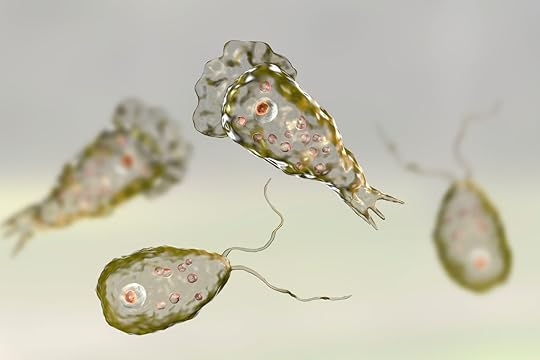
Photo: Kateryna Kon/Shutterstock
Naegleria fowleri is a rare infection but a very serious one. This infection can only be contracted through the nose. Generally, and most commonly, this occurs when swimming in contaminated water if water goes up the nose.
Naegleria fowleri is found worldwide and is prevalent in warm freshwater, not saltwater. Hot springs are a hotbed for Naegleria fowleri, which can also be found in swimming pools that are not properly maintained and/or not chlorinated. In the US, specifically, Naegleria fowleri can, and has, been found in southern states, including Arizona, Texas, and Florida.
Naegleria fowleri infects the brain as the amoeba eats away at and destroys brain tissue. Early symptoms include headaches and nausea while later symptoms cause stiff neck, a feeling of confusion, and seizures.
This serious infection is often untreatable once diagnosed. According to the CDC, “The fatality rate is over 97%. Only four people out of 143 known infected individuals in the United States from 1962 to 2017 have survived.”
How you can avoid it.
Avoid swimming in freshwaters, such as lakes, rivers, and streams. Do not jump into hot springs or submerge your head underwater. If you are swimming in freshwater, use extra caution and consider wearing a nose plug.
7. Leishmaniasis
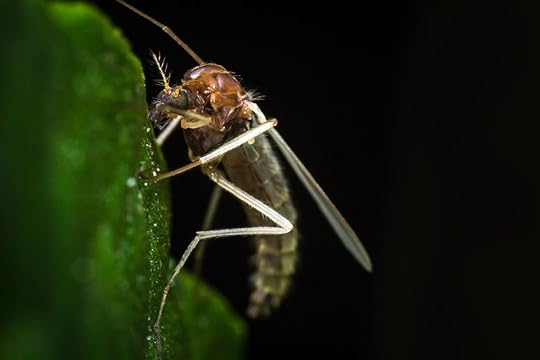
Photo: Ezume Images/Shutterstock
Leishmaniasis is considered a tropical disease as it is most prevalent in warm, tropical environments and regions including Central and South America and parts of Mexico. It is caused by the phlebotomine sand fly.
There are three types of leishmaniasis. The most common type, cutaneous leishmaniasis, is one that infects and affects the skin. This type of leishmaniasis causes skin bumps that can turn into more severe skin ulcers.
These skin ulcers can actually heal on their own, but sometimes those who are infected seek out medical help to speed up the healing process, which can help to reduce the possibility of scarring.
How you can avoid it.
Cover your skin as much as possible when outdoors. Use insect repellent on unprotected or uncovered skin. Use nets to further protect yourself when outdoors, as well as indoors. If there are bed nets in your accommodations, they’re there for a reason — use them. 

More like this: These are the travel vaccines you actually need, according to an expedition doctor
The post 7 parasites you can pick up while traveling appeared first on Matador Network.

Venice underwater in worst flood
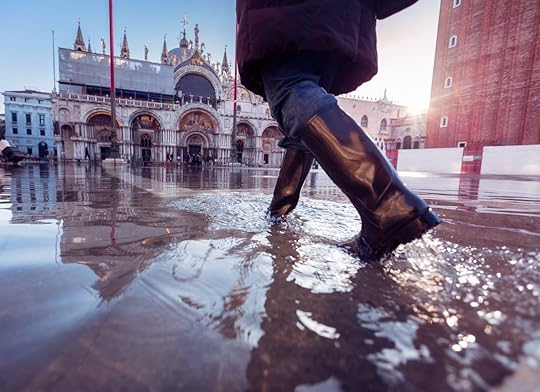
Heavy rain over the past few days has caused Venice, the famous city of canals, to become largely submerged. Due to the ongoing hazardous conditions, schools have been closed and officials are discouraging non-essential travel.
View this post on Instagram
American sailors drank bars dry
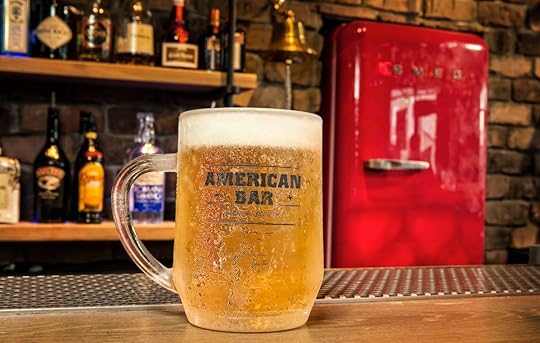
If the craft beer boom in the US has taught us one thing, it’s that Americans like to drink local. Apparently, that also applies to when Americans go abroad. In mid-October, US sailors and Marines drank all of the local beer at several bars in Reykjavik, Iceland, over the course of five days.
The military was docked in Iceland’s capital for NATO exercises. It was the largest NATO gathering since the Cold War, with between 6,000 and 7,000 US service members taking part. When they weren’t working, they were sampling the local fare at the downtown bars. Well, at least the local beer. According to Iceland Magazine, service members drank so much of the local beer at Sæta Svínið, American Bar, and others that the bars had to ask breweries for emergency supplies to refill their fridges.
Whatever your thoughts are about drinking cities dry on your off time, it’s heartening to know that US service members are interested in the products made in the country they’re in. From small craft breweries to Iceland’s big-brand lagers, they took in all tastes of the nation. Local blogger Eiríkur Jónsson wrote that the popular bars borrowed from others with more inventory, but “they were fighting an overwhelming force.” 
H/T: Iceland Magazine

More like this: The perfect one-day walking tour of Reykjavík
The post US Marines drank bars in downtown Reykjavik dry appeared first on Matador Network.

Museum of Illusions pop-up in NYC

Whether it’s curated for dogs or about pizza, New York City is no stranger to interesting pop-up exhibitions, and last month, a new addition to the bunch opened up. The Museum of Illusions aims to bamboozle the senses and show visitors that there’s more to what they see than meets the eye.
Several different installations are available to explore, ranging from entire rooms to holograms. The anti-gravity and rotating rooms will make you feel like you’re defying the laws of physics, the head on a platter display will make it seem as if your head’s been cut off and ready to serve for dinner, and the true mirror allows you to see yourself as others see you. There’s even an infinity room that gives off some major Yayoi Kusama vibes. If you’re worried about not being able to understand what you’re seeing, there are signs next to each illusion that explain the trick, as well as markers that tell you where to stand to take good photos.
The Museum of Illusions is open every day from 9:00 AM to 10:00 PM, and you can buy your tickets here. 

More like this: This immersive Houdini show in New York City is the most magical way to spend Halloween
The post This mind-bending new pop-up in NYC is the best way to test your brain appeared first on Matador Network.

Matador Network's Blog
- Matador Network's profile
- 6 followers



